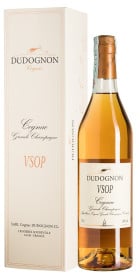
Dudognon VSOP
- 0,70L bottle with box
Wine and spirits masterpieces to your doorstep

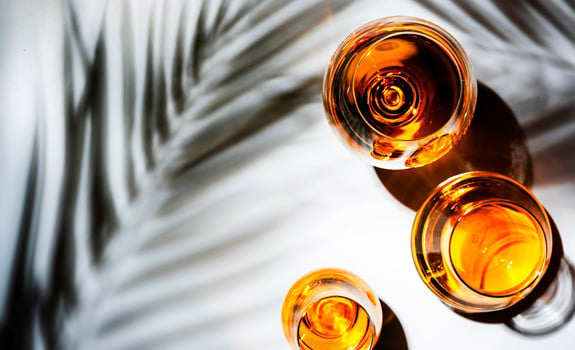
If you were asked about French spirits, which one would be most likely to come to mind instantly? It's no surprise that it's Cognac, the most precise and complex of them all. A spirit of excellence, from a unique terroir and combined with ancestral know-how, Cognac has conquered the whole world by imposing itself as the image of luxury à la française.
See more ...
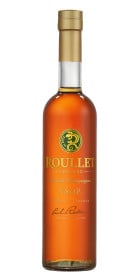
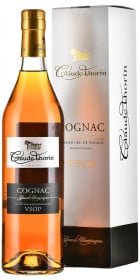
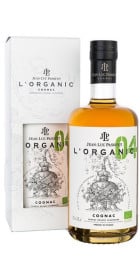
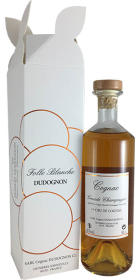
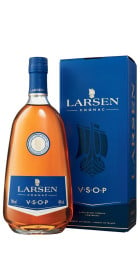
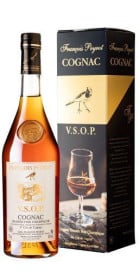
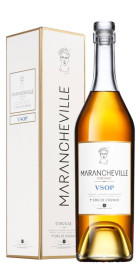
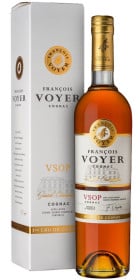
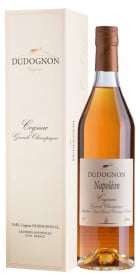
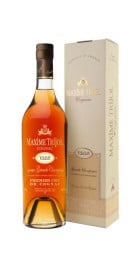
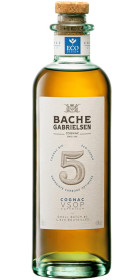
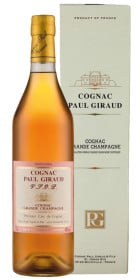
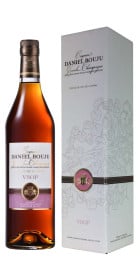

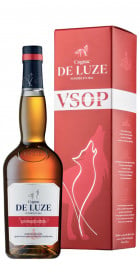
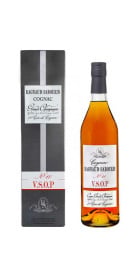
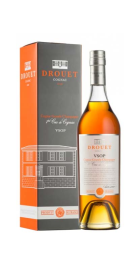
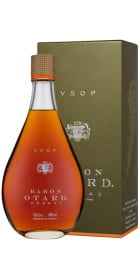
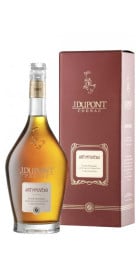
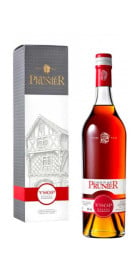
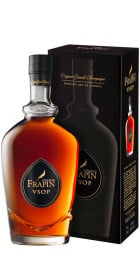
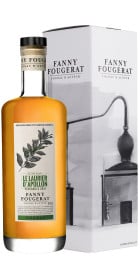
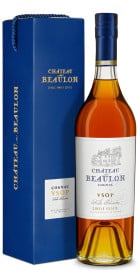
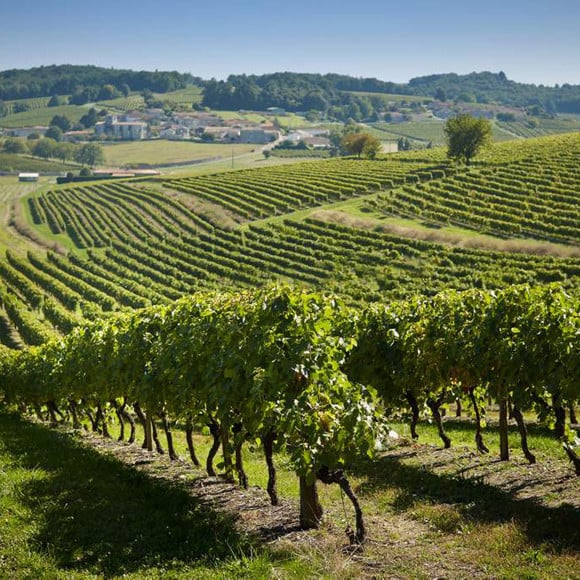
If you were asked about French spirits, which one would be most likely to come to mind instantly? It's no surprise that it's Cognac, the most precise and complex of them all. A spirit of excellence, from a unique terroir and combined with ancestral know-how, Cognac has conquered the whole world by imposing itself as the image of luxury à la française.
Grande Champagne, Petite Champagne, Borderies, Bons bois, Fins bois and Bois Ordinaires, these are the 6 crus of its production region attached to the town of Cognac in southwestern France, which has become the capital of a world-renowned business.
Represented by iconic houses that have contributed to its visibility and reputation, presenting a great diversity of tastes and consistent quality despite the passage of years, the hour of gLoire of the famous wine brandy is not about to fade away.
The Cognac is a spirit of the Brandy family, i.e. wine brandy, obtained in this case from a double distillation of white wine and then refined in oak barrels. But the Cognac is above all an Appellation d'Origine Contrôlée since 1936, its vineyard being spread over the departments of Charente-Maritime, a large part of the Charente and some communes of the Dordogne and Deux-Sèvres. A real line of conduct has been defined, from its production to its marketing, so that its identity and its specificity are preserved.
The vineyard of Cognac covers an area of 75,300 hectares of vines for a production exceeding one million hectoliters. 6 Crus have been delimited from the geological characteristics of the soils of the appellation: La Grande Champagne, Petite Champagne, les Borderies, les Fins Bois, les Bons Bois and les Bois ordinaires.
The white grape varieties used are Ugni blanc in overwhelming majority, as well as coLombard and folle blanche. They give birth to acidic wines thanks to the terroir of Cognac, which are ideal for the production of Brandy. Once finished, these wines will undergo the famous Charentaise distillation which is carried out in two successive heatings, then the distillates will finally know a long aging out of time in oak barrels. Thanks to a permanent contact with the ambient air, the wood will give the brandies their color and their final bouquet. The final step will be the blending of these eaux-de-vie, a work of goldsmith carried out by the cellar master of each house, which will draw the personality of the different Cognacs.
Whatever the way of tasting it, from the Far East to the American continent through Europe, Cognac is everywhere synonymous with great quality, a symbol of an Art de Vivre and the result of three jealously envied ingredients: a land, a know-how and a lot of time. Discover our selection of the most beautiful houses of Cognac.
They were named so because of the clay-limestone nature of the soils on the surface, complemented by soft chalky limestone in the subsoil. The limestone content can exceed 60%. The clays give structure to the soils, high fertility and good water content. These soils are thus not very sensitive to drought, the subsoil behaving like a sponge through which water can slowly rise as the summer drought increases.
They are considered the two best production appellations of Cognac.
The appellation Cognac Borderies is the smallest of the 6 Crus located in the northeast of Cognac. Nearly 4200 hectares of vines are planted on flinty clay, giving round, fine, bouqueted and sweet eaux-de-vie, characterized by violet and iris scents. They obtain an optimal quality after a shorter maturation than those coming from Champagnes.
We will start to speak about Cognac only from the XVIIth century, when the wines of Poitou, La Rochelle and Angoumois, transported since the Middle Ages by boats towards the countries of Northern Europe for the great happiness of the English, the Dutch and the Scandinavians, will start to be transformed into brandies improved in oak barrels.
XIIIth century
The wines of Poitou are thus very appreciated in the countries bordering the North Sea. Thanks to this, the Charente basin began to develop a trade mentality. The vineyards gradually spread towards the interior of the country.
16th century
The Dutch ships come to Cognac to collect the renowned wines of the "Champagne" and "Borderies" crus. However, as the vineyards of the Charente region expanded, such large quantities of wine were produced that it became difficult to sell them, especially since their quality declined due to a low alcohol content that did not always allow them to withstand long sea voyages.
It is thus at this time that the Dutch merchants use it to feed their new distilleries. They transformed it into "burnt wine", the Brandwijn, which gave the word "Brandy". Gradually, stills will be installed in the area of Cognac to allow distillation on the spot. At that time it was only a massive and industrial production, without any intention of the producers to valorize the origin and the quality.
XVIIth century
At the beginning of this century, double distillation appeared in the region, which allowed the product to travel in the form of unalterable brandy, which was much more concentrated than wine and less expensive to transport. The French quickly mastered the process. And it is following delays in the loading of boats that one realizes that the brandy improves by ageing in oak barrels and that it can even be consumed pure.
XVIIIth century
The market begins to be organized and, to meet the demand, trading businesses are created, the famous "comptoirs" in the main cities of the region. They collected the brandies produced and established regular relations with their buyers in Holland, England, Northern Europe, America and the Far East.
XIXth century
From the middle of the 19th century, brandies were progressively shipped in bottles and no longer in barrels, by the numerous trading companies that were created one by one. Thus, related industries developed: glassmaking, case and cork manufacturing and printing. But following the ravages of Phylloxera in the Charente vineyards at the end of the century, many years of effort and patience were needed to get the region's economy back on its feet.
20th century
The reconstitution of the vineyard is carried out slowly, thanks to American rootstocks insensitive to Phylloxera. Weakened by grafting, the traditional grape varieties (CoLombard, Folle Blanche...) are gradually replaced by the more resistant Ugni Blanc, now used for more than 90% of the production of Cognac. The Cognac was then recognized as an Appellation d'Origine Contrôlée in 1936. From then on, all stages of the production of Cognac will be subject to regulations designed to protect its growing reputation.
XXIst century
Today, 90% of Cognac is exported to more than 160 countries around the world. Wherever it is consumed, it is synonymous with a very high quality product, a symbol of France and its art of living. As a luxury product, it is subject to extreme surveillance by the producers, so that its quality, specificity and authenticity are unequalled.
The wine growers of the Cognac appellation produce exclusively white Charentes wine for the production of the future eau-de-vie. The grape varieties used are mostly Ugni blanc, as well as CoLombard and Folle Blanche. These grape varieties have two essential elements: a high level of acidity and a low alcohol content. Indeed, these characteristics are necessary to obtain a Cognac of good quality, because it allows the preservation and a greater concentration of floral and fruity aromas, an essential criterion.
Most of the grapes are harvested mechanically with the macHine harvesting machine. The grapes are then pressed with pneumatic presses to obtain the juice, which is immediately put into fermentation, without any additives as required by the regulations of Cognac. Chaptalization, i.e. the addition of sugar to increase the degree of alcohol, is forbidden. All these steps in the winemaking process are carefully monitored because they will have a decisive influence on the final quality of Cognac.
Once the fermentations are completed, the wines are acidic and low in alcohol, therefore ready to be distilled. The distillation must be completed by March 31 of the following year.
The distillation of the white wine for its transformation into eau-de-vie is carried out in two stages in the Charentais stills known as "à repasse":
It is a step that is necessarily carried out in copper stills composed of three elements: a boiler, an onion-shaped cap that plays the role of a condenser and extended by a swan neck, the latter connecting it to a wine heater.
The wine is then introduced into the boiler, which is brought to a boil, producing alcohol vapors that accumulate in the hood, pass through the swan neck and then end their journey in the coil of a cooler. On contact with the cooler, they condense and flow into the form of "brouillis", which is collected in barrels and then poured into the boiler for the second distillation.
The first fractions that flow out are called the heads, which are very rich in alcohol, representing 1 to 2% of volume and are discarded. Then comes the heart, clear and limpid brandy which is kept because it is it which will give the Cognac. Then the third faction, the tails, are in turn also rejected.
A complete distillation cycle takes about 24 hours. It is a process that requires a lot of attention and constant monitoring by the distiller. The deadline for distillation is March 31 following the harvest.
It is in oak barrels of 270 to 450 liters that will rest the brandies resulting from the distillation, in order to obtain a characteristic color and bouquet that will allow them to obtain the designation Cognac. This oak can come from the forests of Limousin or Tronçais, and it is chosen according to its hardness, its low porosity and the Extraactive principles it contains.
This long maturation phase can sometimes last for decades, as the porosity of the wood allows indirect contact between the eau-de-vie and the ambient air. The natural humidity level of the ageing cellars constitutes, by its influence on evaporation, one of the determining factors of the maturation. Indeed, as soon as there is a balance between humidity and dryness, the eau-de-vie becomes mellow and ages harmoniously.
During a first phase of Extraction, the new eau-de-vie solubilizes the Extractibles of the wood and undergoes an evolution in color as well as in flavor and bouquet (oak wood odor with vanilla notes). Gradually, the brandy will digest the wood during a transitional phase of hydrolysis, its coloring will thus darken. And during the oxidation phase, the taste softens, the smell of steamed oak disappears in favor of floral and slightly vanilla smells, and the coloring becomes more pronounced. As the years go by, the brandy becomes more and more mellow, the bouquet becomes richer and the smell of "rancio" appears.
Throughout the aging process of Cognac, it will progressively lose volume and alcohol due to the constant contact with the air. This natural phenomenon of evaporation is called the "Angels' Share" and represents the equivalent of nearly 20 million bottles lost per year, symbolizing the price of perfection.
Once the different eaux-de-vie have reached maturity, it is up to the cellar master to carry out the blending in order to create the different Cognacs. With a precision of horlOger, he will implement all his know-how to develop custom blends of brandies of different ages and vintages by playing on the alliance of several flavors. This work illustrates the fruit of his expertise and proves to be of capital importance to guarantee each Cognac its quality, its personality and its harmony.
Cognac must be aged in oak barrels for at least two years before it can be marketed. It keeps all its life the age it had when it was bottled, because contrary to wine, the alcohol does not evolve any more when it is under glass. But how to find one's way through the different age mentions?
Here are those that may appear on Cognac bottles:
Generally speaking, each house uses a large number of eaux-de-vie, some of which are much older than the minimum required for the production of its blends.
From the purest tradition to the current modes of consumption, there are multiple ways to taste the Cognac to appreciate all its richness and complexity. Indeed, what is not the pleasure of prolonging the end of a delicious meal by tasting a Cognac served alone in a spirit glass, preferably tulip-shaped? A unique moment of exaltation of the senses, without a doubt.
But on the other hand, the Cognac can also surprise us when it is married with sparkling water or tonic for example, playing a very thirst-quenching role for an aperitif with friends. The numerous aromatic profiles that they present offer a lot of possibilities, which a new generation of bartenders are appropriating. These consumption methods are appreciated worldwide, especially in the United States and Asia, where Cognac can be enjoyed as a long drink on a summer afternoon and be the main drink of a refined meal.
And when tasted in cocktails, its discreet presence will be enhanced by the other sweet or spicy flavors that come into play.
The real question is which Cognac to choose according to the type of opportunity: